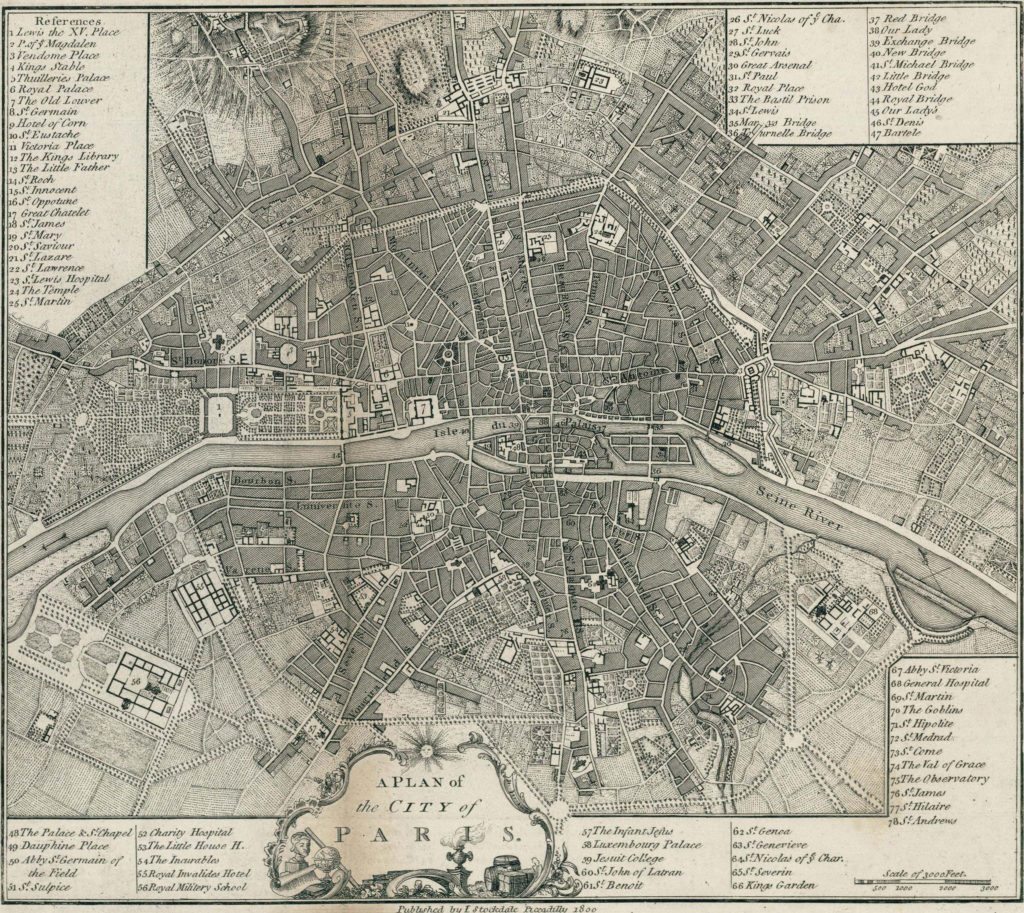Paris 1800
The year 1800 was a significant one for Paris, as it was a time of considerable political change following the French Revolution and during the rule of Napoleon Bonaparte. Here are some key events that occurred in 1800 affecting Paris:
Bank of France: Napoleon founded the Banque de France, the central bank of France, on 18 January 1800. This marked a significant step in stabilizing the French economy after the chaos of the French Revolution. Its creation was integral to the modernization and development of the French financial system.
The Plot of the Rue Saint-Nicaise: This was an assassination attempt on Napoleon Bonaparte on 24 December 1800. Also known as the “Machine Infernale” plot, it involved a bomb planted in a cart on the narrow Rue Saint-Nicaise. Napoleon’s carriage rushed past just in time, but the explosion caused numerous casualties and spread fear throughout the city.
Moving of the Capital: Under the French Consulate, the government of France moved from Versailles back to Paris, where Napoleon and others undertook a vast series of public works projects to modernize the city. This included paving the streets, building new bridges, and refurbishing public squares. This re-cemented Paris’s status as the political, economic, and cultural hub of France.
The French Consulate: After seizing political power in France in a coup d’etat in 1799, Napoleon began his role as First Consul under the French Consulate in 1800. This would mark the beginning of a period of relative stability and reform after the upheaval of the French Revolution.
Napoleonic Code: While the Napoleonic Code, or the Civil Code of the French, wasn’t enacted until 1804, work began on this vast legal overhaul around 1800. The code consolidated many reforms of the French Revolution and would have a lasting global impact. This reformation of the law system was likely a significant topic of discussion in Paris throughout the early 1800s.

